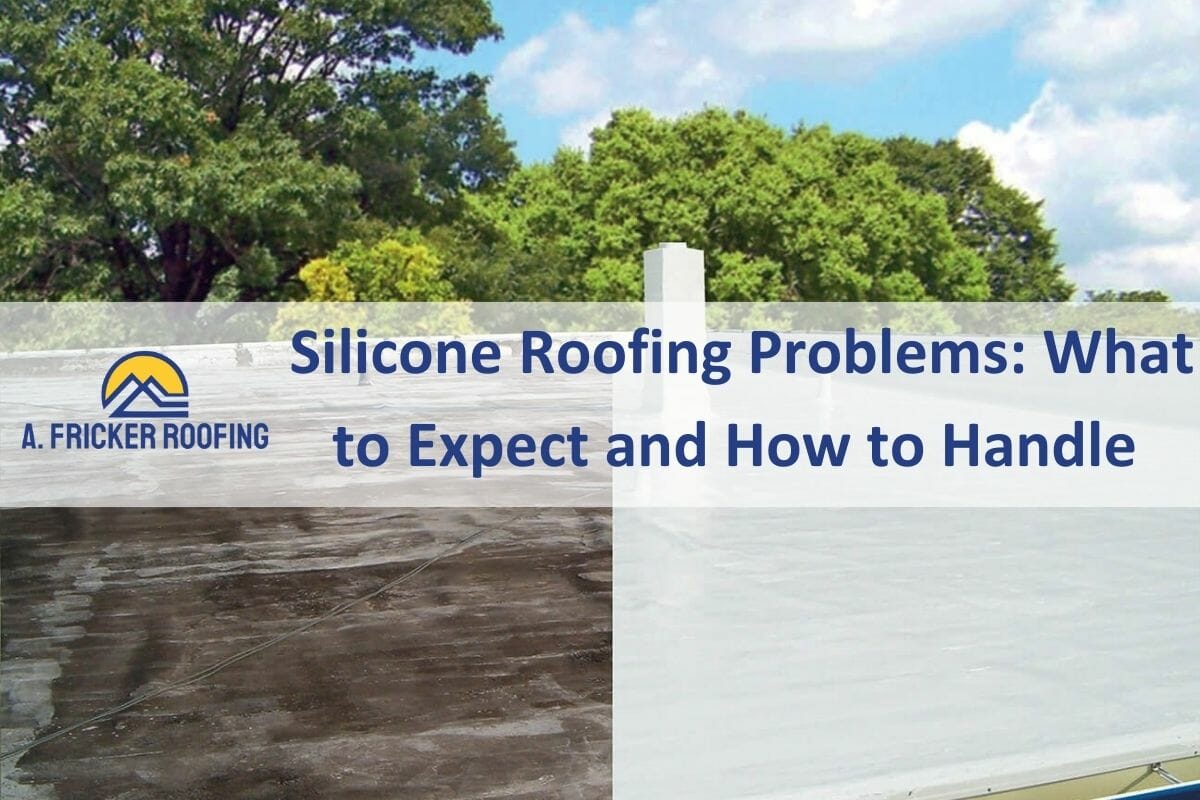If you’re considering a silicone roof coating for your building, it’s crucial to weigh the pros and cons. While silicone roof coatings offer numerous benefits, they are not without their share of issues. In this article, we’ll dive into the world of silicone roof coatings, exploring what they are, the advantages they bring, and the common problems you might encounter. We’ll also provide tips on how to prevent and address these issues effectively.
What Is A Silicone Roof Coating?
A silicone roof coating is a type of roofing material used to protect and extend the life of various types of roofs, including flat and low-slope roofs. It is typically applied as a liquid coating that cures into a durable, flexible, and waterproof membrane.
What Are Silicone Roof Coatings Made Of?
Silicone roof coatings are made of the following materials:
Silicone Polymers
The primary component of a silicone roof coating is silicone polymers. These long-chain molecules provide the coating with flexibility and weather resistance. They create a protective barrier against moisture, preventing leaks.
Solvents And Additives
Solvents and additives are mixed with silicone polymers to create a workable consistency for application. They also enhance adhesion to the roofing substrate and help with curing.
Pigments And Reflective Fillers
Pigments and reflective fillers are added to silicone roof coatings to achieve the desired color and reflectivity. These components play a role in energy efficiency by reflecting sunlight and reducing heat absorption.
Common Problems With Silicone Roof Coatings
While silicone roof coatings are a popular option when it comes to flat roof coatings, they have many disadvantages that can’t be ignored. Here is a list of some to take into consideration before making your final decision.
Problem 1: Ponding Water
One of the most common issues with silicone roof coatings is ponding water. If your roof doesn’t have adequate slope or drainage, water can accumulate in certain areas, causing premature wear and tear. Ponding water can deteriorate the coating over time, making it fragile and deteriorate further. It also shows the least resistance to mold and algae growth.
Problem 2: Adhesion Issues
Silicone coatings require a clean and dry surface for proper adhesion. If not applied under the right conditions, or if contaminants are present, adhesion problems can occur. This may result in sections of the coating peeling or bubbling, leaving your roof vulnerable to leaks.
Problem 3: UV Degradation
While silicone coatings are excellent at reflecting UV rays, they are not entirely immune to UV degradation. Over time, exposure to sunlight can cause the coating to become brittle and lose its protective properties. Regular inspections are essential to catch and address this issue early.
Problem 4: Temperature Extremes
Silicone roof coatings can expand and contract with temperature fluctuations, which is generally an advantage. However, this expansion and contraction can be more pronounced in extremely hot or cold climates, potentially leading to cracking or splitting if the coating is not applied correctly.
Problem 5: Maintenance Challenges
Maintenance is key to the longevity of silicone roof coatings. Neglecting routine inspections and repairs can exacerbate minor issues, leading to more significant problems down the line. Over time, silicone coatings may require recoating to maintain their effectiveness.
Read More: 7 Most Popular Roof Coatings & Their Benefits
Preventing And Addressing Silicone Roof Coating Issues
Now that we’ve discussed the common problems, let’s explore how to prevent and address them effectively:
Regular Inspections: Schedule routine roof inspections to catch issues early before they escalate.
Proper Application: Ensure experienced professionals apply the silicone coating and that they follow manufacturer guidelines.
Routine Maintenance: Clean the roof’s surface and remove debris regularly to prevent adhesion problems and ponding water.
Selecting The Right Silicone Coating: Consult a roofing expert to choose the silicone coating that best suits your climate and building type.

Exploring Diverse Roof Coating Options Available
Plenty of roof coating options are available on the market, so it can become overwhelming when it comes time to decide on just one. Luckily, we’ve provided a short description of each to make your choice easier.
Acrylic Roof Coatings
Acrylic roof coatings are renowned for their versatility and affordability. They are relatively easy to apply and provide great UV resistance. Acrylic coatings can be applied to various roofing materials, including metal, single-ply membranes, and built-up roofs.
Polyurethane Roof Coatings
Polyurethane coatings offer exceptional durability and weather resistance. They form a seamless, waterproof membrane when applied, making them an ideal choice for flat or low-slope roofs. Their flexibility helps prevent cracking caused by temperature fluctuations.
Asphalt Roof Coatings
Asphalt roof coatings, known as asphalt emulsions, are budget-friendly and can be applied to multiple types of flat roofing membranes. They provide protection against UV radiation and water infiltration. However, they may not offer the same longevity as some other alternatives.
Elastomeric Roof Coatings
Elastomeric coatings are highly flexible and capable of stretching to accommodate a roof’s movements. This property makes them well-suited for regions that experience temperature fluctuations. They are celebrated for their ability to bridge cracks and deliver superior waterproofing.
Do you own a metal roof? Then, here is the best coating for a metal roof.
How To Select The Right Roof Coating Option
Selecting the right roof coating requires you to consider many things at the same time. Since your roof is one of the most critical and essential components of your property, you can’t leave it unprotected from forceful impacts or ponding water. Applying the right coating is as essential as installing the right roof.
Consider the following aspects when selecting the right roof coating:
Climate Adaptability
Local climate conditions play a pivotal role in determining the most suitable roof coating. Reflective coatings, for instance, excel in hot areas, while elastomeric coatings are more adept at handling temperature extremes.
Roofing Material Compatibility
The type of roofing material you have should guide your choice of coating. Not all coatings are compatible with every roofing material. Consulting with a roofing professional can ensure you choose a coating that is compatible and provides optimal performance.
Budget Considerations
Your budget will inevitably influence your selection. While some coatings offer more benefits, they might entail a higher initial investment. Weigh long-term savings against upfront costs to make the right choice.
Conclusion
Silicone roof coatings offer a range of benefits, but they are not without their challenges. By understanding the potential problems and taking proactive measures, you can make the most of this durable roofing solution. Regular maintenance and a keen eye for issues can go a long way in ensuring your silicone-coated roof serves you well for years to come.
Roof Coating Services In Tulsa, OK
Do you want to apply coatings to your roof? Then, you must contact the best roofing contractor in Tulsa, OK. At A. Fricker Roofing and Waterproofing, we offer numerous roofing services, including roof installation, replacement, repair, and roof coating applications. Contact us today at (918)-402-7167!

